Location: GUIs >
Apple >
Macintosh in 1984
The Macintosh in 1984
There are a number of Macintosh history sites out there, but I
wanted to post some early MacOS screen shots that I thought were interesting.
These screenshots were made using the vMac
emulator running MacOS 1.1, I would have used 1.0, but it wouldn't
run right under vMac. Aside from a couple of menu items added under the
"Special" menu, 1.1 reportedly looks the same as 1.0 which was released
on January 1984.
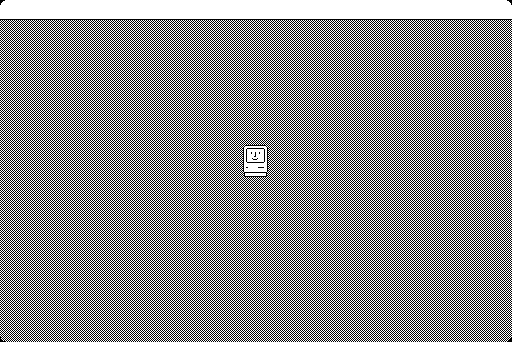
As the Macintosh boots up it displays a happy macintosh picture to
let the user know everything is OK.

Typically, the Macintosh starts up the Finder application. The Finder
is the MacOS's program for managing files and launching applications. The
Finder's user interface is far superior to that of the "MS-DOS Executive"
used in Microsoft's Windows 1.x and 2.x or even the Program Manager / File
Manager of Windows 3.x. It wasn't until Windows 95 (11 years later) that
Microsoft would even come close to the look and feel of the Finder - then
they threw it all away and replaced it with a web browser in Windows 98.

Disks, when inserted, appear directly on the desktop allowing for very
easy access to files. Double clicking the disk icon opens a file window.
Finder windows open with a zooming effect.

Finder windows can be dragged around the screen by "grabbing" the title
bar with the mouse. Clicking the small box in the upper left of the window
closes the window.
Files and folders can be dragged to the desktop - although they do not
actually exist there. The item is not copied or moved to another location,
only the icon is displaced from the folder where it really is and displayed
on the desktop instead The Trash icon works in a similar manner,
holding icons until the Empty Trash option is selected and the files are
deleted.
Files can be renamed by clicking on the name underneath the file's icon
and typing the new name.
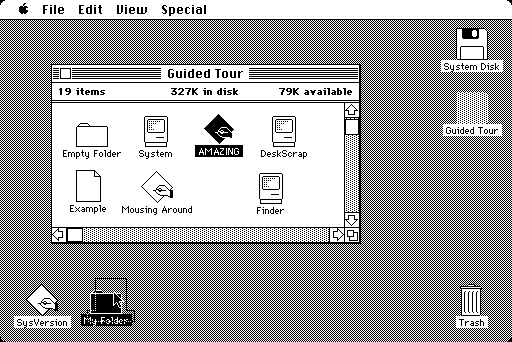
Files and folder can be moved or copied by dragging and dropping them
in to folders or drives.
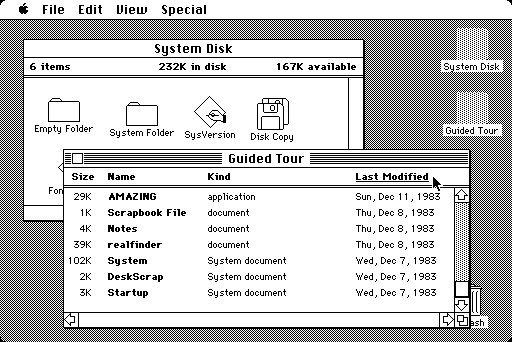
File folders can be viewed as icons (default) or as a list sorted by
size, name, kind or date. The list view is not quite as friendly as the
icon view in this early version of MacOS as list items can not be dragged
like regular icons.
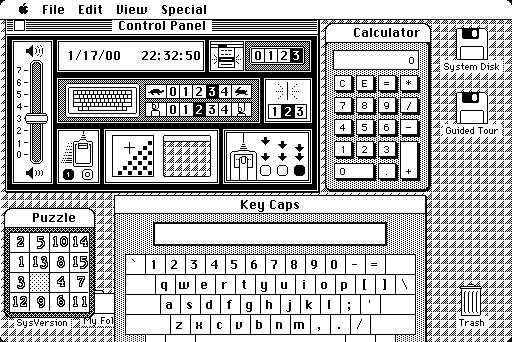
The finder has a number of desktop accessories, including a rather
visually compact control panel. The control panel lets you adjust the volume
(sound in a 1984 IBM PC was unheard of, other than the beeper that couldn't
be shut off), mouse speed (most 1984 PCs didn't even have anything to click
at yet), the time (already Y2K compliant!), keyboard repeat rates, cursor
blink speed, the background pattern, double click speed, and the number
of times a menu item blinks when you select it.
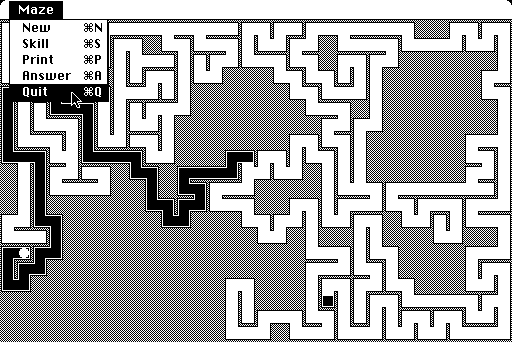
While the desktop accessories run windowed, other applications run
using the entire screen (newer MacOS allows multiple programs to share
the screen). They also get their own set of menus - there is always only
one menu visible. This works very well on small displays as it conserves
valuable screen space, but in my opinion, on very large displays this could
sometimes be an annoyance.
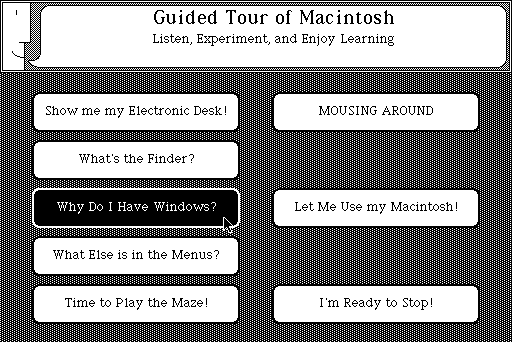
This is on a tour disk, and I found this particular option very interesting.
All of this was designed to run in 128k of RAM. Makes you really wonder
why Windows 2000 requires 128 MEGS to run. And the best thing about
all of this is there is no stupid web "integration"!
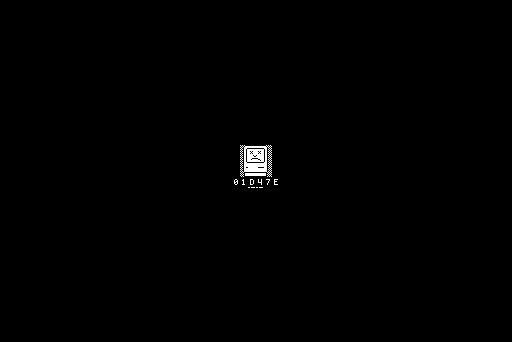
They killed Macintosh! You bastards! I guess this is the Macintosh
equivalent of the BSOD. I got this while trying to exit one of the
programs. It could just be a problem with running under vMac.
| 







